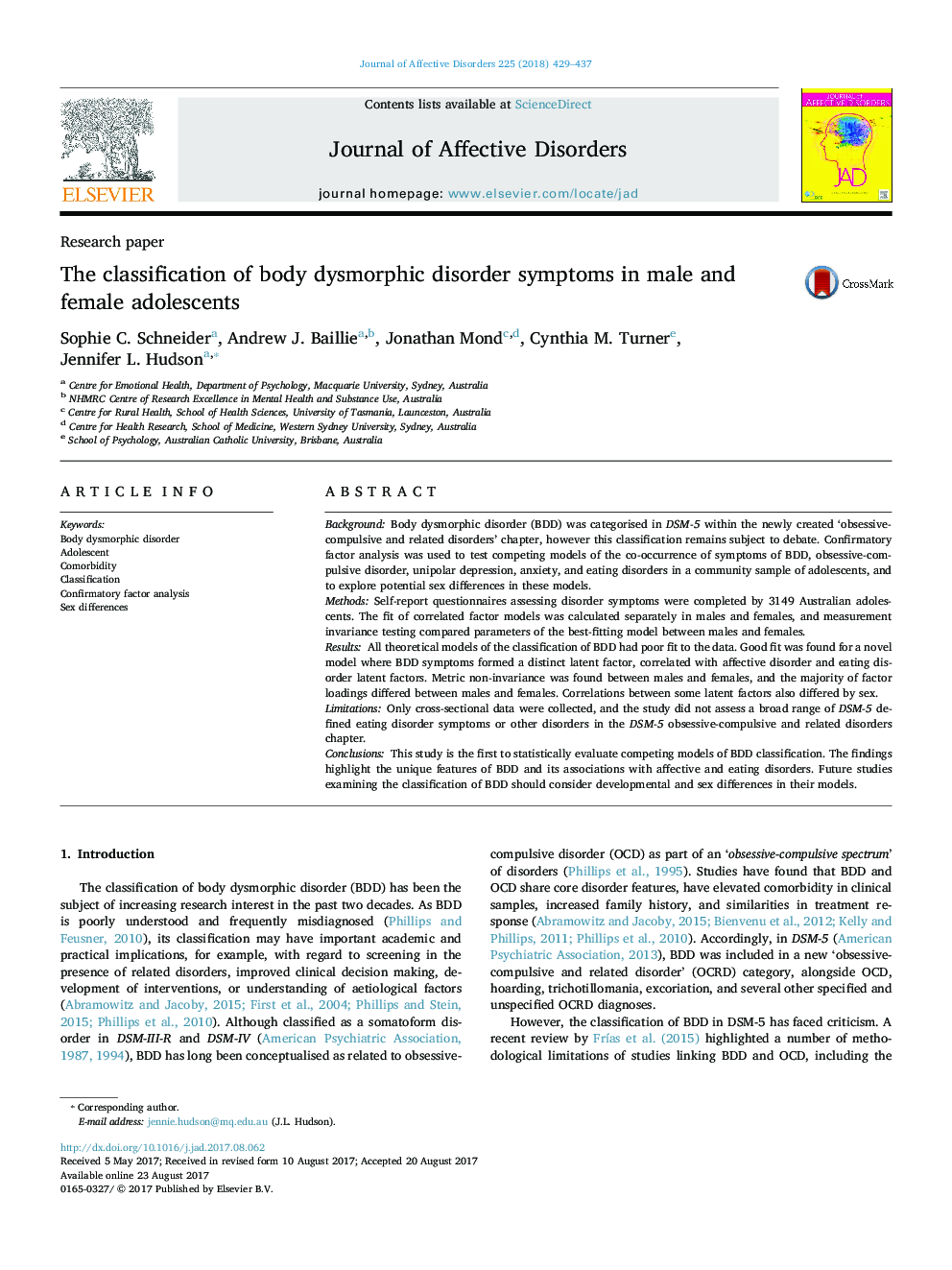| کد مقاله | کد نشریه | سال انتشار | مقاله انگلیسی | نسخه تمام متن |
|---|---|---|---|---|
| 5721743 | 1608100 | 2018 | 9 صفحه PDF | دانلود رایگان |
- The classification of body dysmorphic disorder is subject to debate.
- Confirmatory factor analysis was performed using data from 3149 adolescents.
- Body dysmorphic disorder symptoms formed a unique factor.
- This factor was moderately correlated with affective and eating disorder symptoms.
- Sex differences emerged, particularly in eating disorder associations.
BackgroundBody dysmorphic disorder (BDD) was categorised in DSM-5 within the newly created 'obsessive-compulsive and related disorders' chapter, however this classification remains subject to debate. Confirmatory factor analysis was used to test competing models of the co-occurrence of symptoms of BDD, obsessive-compulsive disorder, unipolar depression, anxiety, and eating disorders in a community sample of adolescents, and to explore potential sex differences in these models.MethodsSelf-report questionnaires assessing disorder symptoms were completed by 3149 Australian adolescents. The fit of correlated factor models was calculated separately in males and females, and measurement invariance testing compared parameters of the best-fitting model between males and females.ResultsAll theoretical models of the classification of BDD had poor fit to the data. Good fit was found for a novel model where BDD symptoms formed a distinct latent factor, correlated with affective disorder and eating disorder latent factors. Metric non-invariance was found between males and females, and the majority of factor loadings differed between males and females. Correlations between some latent factors also differed by sex.LimitationsOnly cross-sectional data were collected, and the study did not assess a broad range of DSM-5 defined eating disorder symptoms or other disorders in the DSM-5 obsessive-compulsive and related disorders chapter.ConclusionsThis study is the first to statistically evaluate competing models of BDD classification. The findings highlight the unique features of BDD and its associations with affective and eating disorders. Future studies examining the classification of BDD should consider developmental and sex differences in their models.
Journal: Journal of Affective Disorders - Volume 225, 1 January 2018, Pages 429-437
